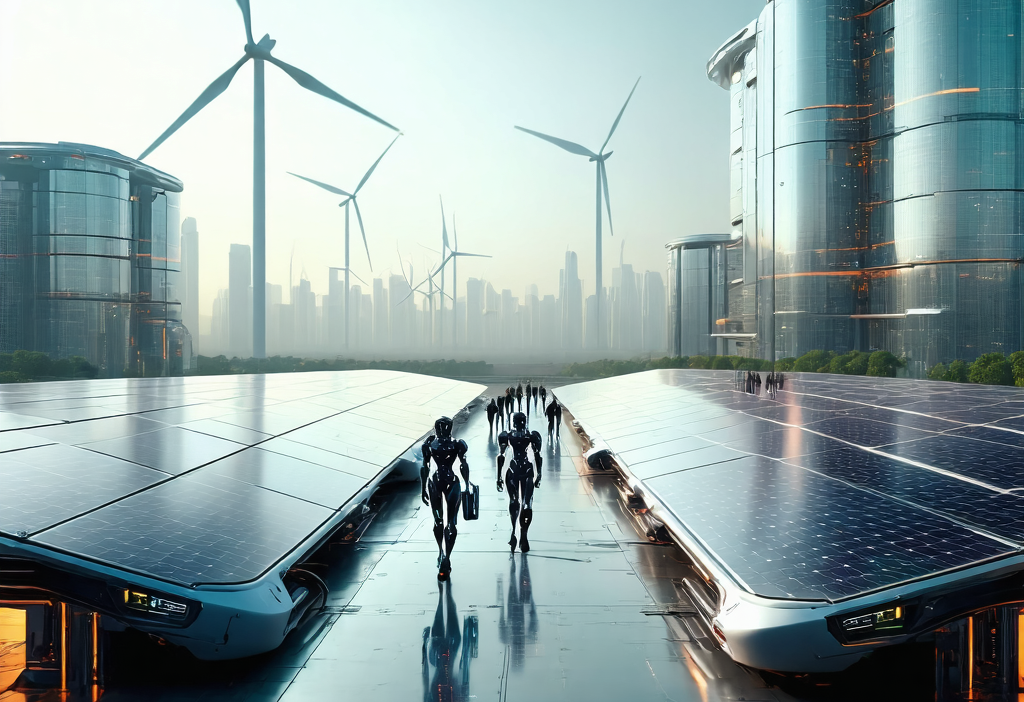Introduction to the Future of Renewable Energy
As we stand on the brink of a new era, renewable energy is no longer just an alternative—it’s becoming the cornerstone of our global energy strategy. The race to reduce carbon emissions and combat climate change has accelerated the development of innovative technologies that promise to revolutionize how we power our world.
The Growing Demand for Sustainable Energy
Over the past decade, the demand for sustainable energy solutions has skyrocketed. This shift is driven by a combination of environmental concerns, government policies, and advancements in technology. According to IEA, renewable energy capacity additions are expected to grow by 60% over the next five years. Here’s why:
- Environmental benefits: Reducing greenhouse gas emissions and combating climate change.
- Economic incentives: Governments and organizations offering subsidies and tax credits for renewable projects.
- Technological advancements: Innovations in energy storage, smart grids, and more efficient generation methods.
These factors are creating a perfect storm of opportunity for the renewable energy sector. But what does this mean for our future? Let’s dive into some groundbreaking technologies that are reshaping the landscape.
Innovative Technologies Shaping Renewable Energy
The renewable energy space is brimming with exciting developments. Here are some of the most promising technologies:
Solar Power: The Bright Future
Solar power has always been a front-runner in the renewable energy race, and recent advancements are making it even more efficient. Perovskite solar cells, for example, promise to be cheaper and more flexible than traditional silicon panels. Plus, bifacial solar panels can capture sunlight on both sides, increasing energy output by up to 20%. According to NREL, these innovations could make solar power the most cost-effective energy source worldwide.
Wind Energy: Scaling New Heights
Wind turbines are getting bigger and better. Offshore wind farms, like those in Denmark, are setting new benchmarks for efficiency. Floating wind turbines are also gaining traction, as they can be placed in deeper waters where winds are stronger and more consistent. This technology could significantly expand the potential of wind energy.
Hydrogen Power: The Next Frontier
Hydrogen is often called the ‘cleanest’ energy carrier because it produces only water when burned. Advances in green hydrogen production, which uses renewable energy to power electrolysis, are making this technology more viable. Countries like Germany are investing heavily in hydrogen infrastructure as part of their energy transition plans.
Bioenergy: Turning Waste into Energy
Bioenergy, derived from organic materials, is another promising avenue. Advanced biofuels, made from non-food crops or agricultural waste, offer a sustainable alternative to fossil fuels. For instance, NREL reports that algae-based biofuels could provide up to 50% of the United States’ transportation needs by 2030.
Overcoming Challenges: The Road Ahead
Despite these advancements, challenges remain. Issues like energy storage, grid integration, and cost-effectiveness need to be addressed for renewable energy to reach its full potential. However, ongoing research and investment are paving the way for solutions:
- Battery storage: Innovations in battery technology, such as solid-state batteries, are improving energy storage capabilities.
- Smart grids: Modernizing power grids to better manage and distribute renewable energy sources.
- Policy support: Governments worldwide are implementing policies to accelerate the adoption of clean energy technologies.
As we navigate these challenges, collaboration between governments, industries, and researchers will be key. The transition to a renewable energy future is not just an option—it’s a necessity for ensuring a sustainable planet for generations to come.
Conclusion: A Sustainable Future Awaits
The future of renewable energy is bright, filled with groundbreaking technologies and innovative solutions. While there are obstacles to overcome, the momentum behind this movement is unstoppable. By embracing these advancements, we can create a cleaner, greener world—one powered by the sun, wind, and other sustainable sources.
As the global community continues to prioritize sustainability, renewable energy will undoubtedly play a central role in our collective journey toward a better future. The time to act is now—to invest, innovate, and commit to a sustainable tomorrow.





